Battle of Britain (film)
5.2 /10 1 Votes
63% Rotten Tomatoes Initial DVD release May 20, 2003 Language English | 7/10 IMDb 1/4 Roger Ebert Genre Action, Drama, History Duration Country United KingdomGermanyUnited States | |||||||||||||||||||||||||||||||||
 | ||||||||||||||||||||||||||||||||||
Release date 15 September 1969 (1969-09-15) Cast (Senior civil servant), (Squadron Leader Canfield), (Air Vice Marshal Keith Park), (Baron von Richter), (Sgt. Pilot Andy), (Air Chief Marshal Sir Hugh Dowding) Similar movies Fury , Captain America: The First Avenger , The Monuments Men , Saving Private Ryan , Valkyrie , Max Manus: Man of War | ||||||||||||||||||||||||||||||||||
Battle of britain the final battle
Battle of Britain is a 1969 British Second World War film directed by Guy Hamilton, and produced by Harry Saltzman and S. Benjamin Fisz. The film documented the events of the Battle of Britain. The film drew many respected British actors to accept roles as key figures of the battle, including Sir Laurence Olivier as Hugh Dowding and Trevor Howard as Keith Park. It also starred Michael Caine, Christopher Plummer and Robert Shaw as Squadron Leaders. The script by James Kennaway and Wilfred Greatorex was based on the book The Narrow Margin by Derek Wood and Derek Dempster.
Contents
- Battle of britain the final battle
- Battle of britain 1969 trailer fan made
- Plot
- Cast
- British Allies and Commonwealth
- German
- Production
- Aircraft
- Locations
- Aircraft models
- Releases
- Historical accuracy
- Musical score
- Reception
- Influence
- Merchandise
- References
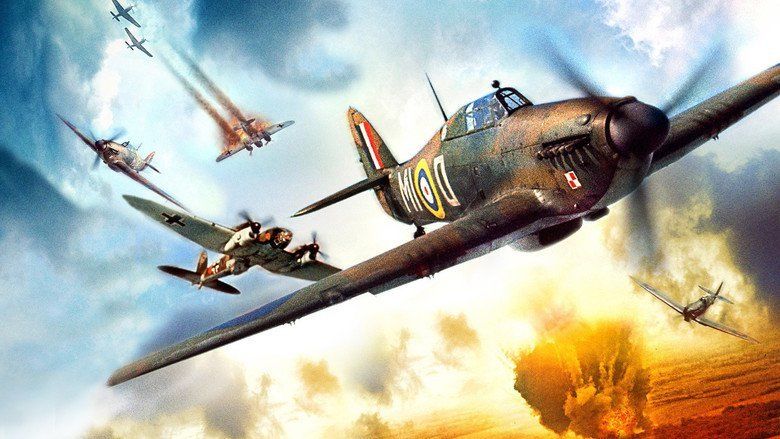
The film endeavoured to be an accurate account of the Battle of Britain, when in the summer and autumn of 1940 the British RAF inflicted a strategic defeat on the Luftwaffe and so ensured the cancellation of Operation Sea Lion – Adolf Hitler's plan to invade Britain. The film is notable for its spectacular flying sequences, in contrast with the unsatisfactory model work seen in Angels One Five (1952) and on a far grander scale than had been seen on film before; these made the film's production very expensive.
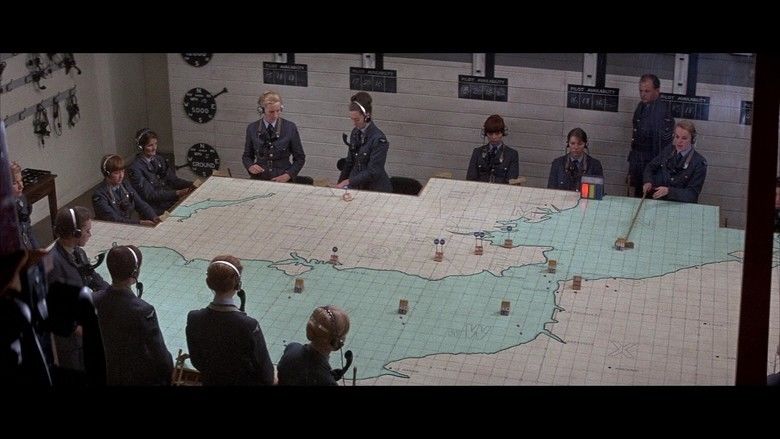
Battle of britain 1969 trailer fan made
Plot

During the Battle of France in June 1940, RAF pilots evacuate a small airfield in advance of the German Blitzkrieg. The pilots, along with British and French military, leave just as German aircraft arrive and execute a heavy strafing attack. RAF Air Chief Marshal Hugh Dowding (Laurence Olivier), realising that an imminent invasion of Great Britain will require every available aircraft and airman to counter it, stops additional aircraft being deployed to France so that they are available to defend Britain. In the next dramatic scene, French civilians watch in grim despair as a convoy of German troops marches into France and takes control.
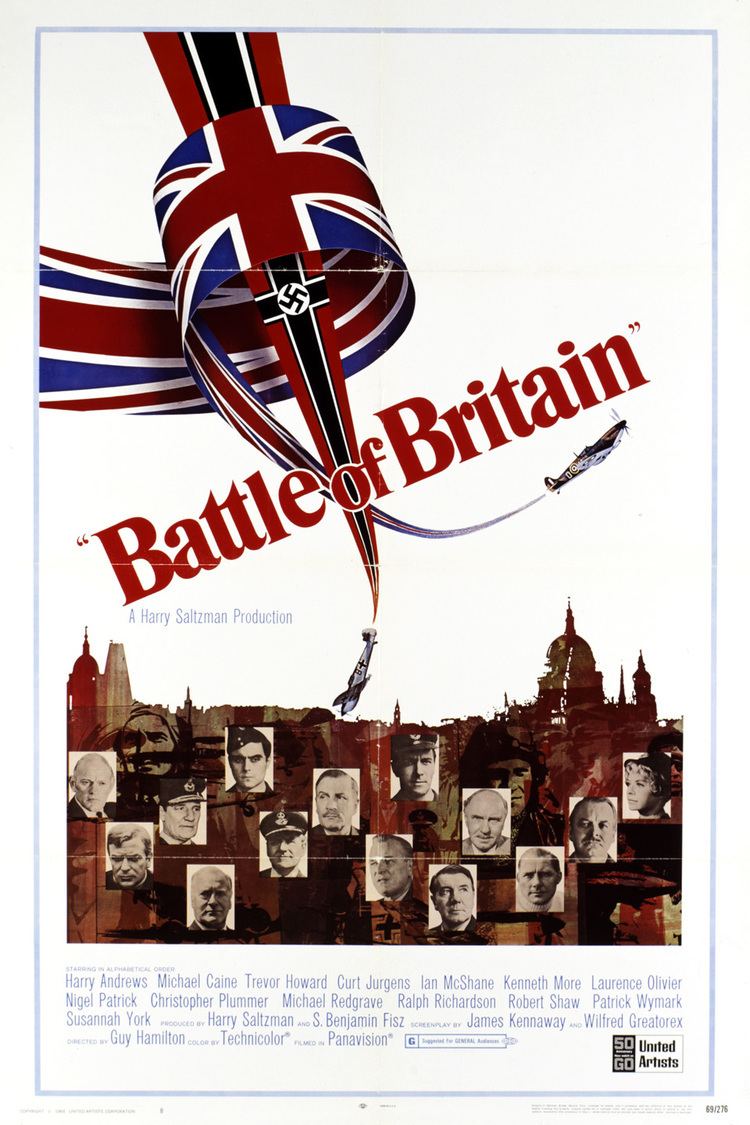
At the deserted beaches of Dunkirk, the BBC reports British Prime Minister Winston Churchill's declaration that "what General Weygand called the 'Battle of France' is over, the Battle of Britain is about to begin". Luftwaffe Inspector-General Field Marshal Milch arrives to inspect a large German airfield in captured France. Hundreds of Heinkel bomber aircraft are stationed under Luftwaffe General Kesselring's command.

Luftwaffe commanders are stunned when the Führer informs them that the British are not their "natural enemy" and delays their attack while attempting a diplomatic settlement. In neutral Switzerland, the German ambassador, Baron von Richter (Curd Jürgens) officially proposes new peace terms to his British counterpart, Sir David Kelly (Ralph Richardson), stating that continuing to fight the "masters" of Europe is hopeless. Kelly's brave retort, "Don't threaten or dictate to us until you're marching up Whitehall ... and even then we won't listen", is followed by a private comment to his wife that von Richter is probably correct. In England, commanders celebrate their good fortune, using the delay to build up their strength and continually train their pilots and ground controllers.

The wait finally ends when Luftwaffe pilots receive orders to move to the front, where troops are preparing for a sea-borne invasion. The campaign begins with the Luftwaffe launching an early morning assault on "Eagle Day". The plan is to destroy the RAF on the ground before they have time to launch their Spitfire and Hurricane fighters.
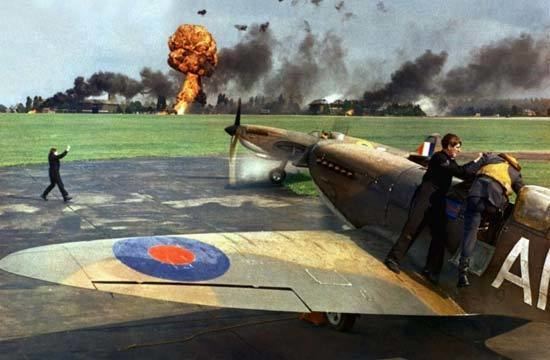
Eagle Day proves highly successful, with attacks on British radar installations by Stuka dive bombers. Two radar stations are put out of action and a number of British airfields are damaged or destroyed but British losses are relatively light. A grueling battle of attrition ensues, with the RAF airfields under repeated attack while inflicting heavy, but non-critical, damage on the attacking forces.

Adding to the RAF's problems is a battle between the commanding officers of 11 Group, Keith Park (Trevor Howard), and 12 Group, Trafford Leigh-Mallory (Patrick Wymark). 12 Group is tasked with protecting 11 Group's airfields while 11 Group meets the enemy, but in raid after raid 12 Group aircraft are nowhere to be seen. Called to meet Dowding, Leigh-Mallory explains that the "Big Wing" tactic takes time for form up, while Park complains that the tactic simply is not working. Dowding ends the debate noting a critical shortage of pilots, wearily remarking, "We're fighting for survival, and losing."
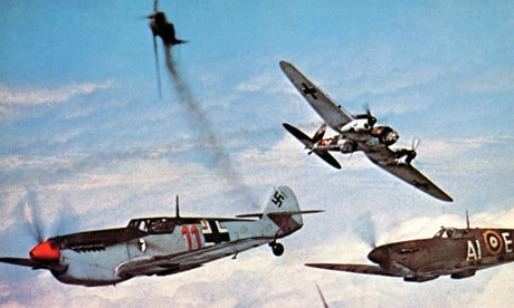
The turning point occurs when a squadron of German bombers becomes lost in bad weather at night and drops bombs on London. In retaliation, the RAF attacks Berlin. Though the damage is negligible, an enraged Adolf Hitler publicly orders London to be razed. Hermann Göring (Hein Riess) arrives in France to personally command the attack, confident that the end of the battle nears. Their first attack skirts the RAF, who are still defending their airfields to the south, and they bomb unopposed. Night time attacks follow and London burns.
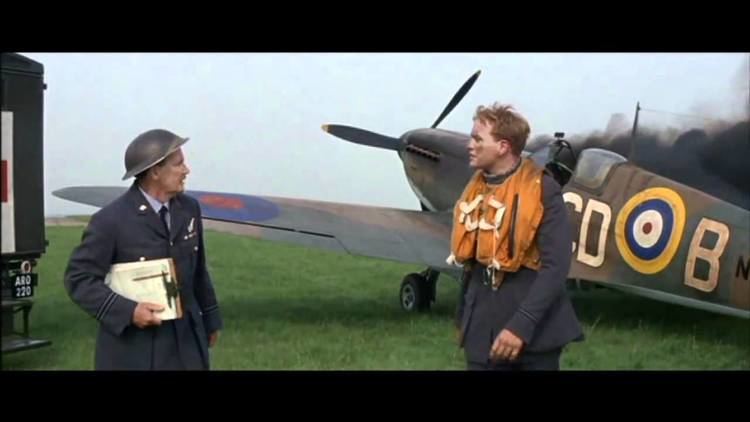
Meanwhile, to supplement Commonwealth forces, the RAF has been forming units of foreign pilots who have escaped German-occupied countries; the main difficulty is their lack of English-language skills. While on a training flight, a Free Polish squadron accidentally runs into an unescorted flight of German bombers. Ignoring the commands of their British training officer, they peel off one by one and shoot down several of the bombers. Park rewards them by elevating them to operational status, leading Dowding to do the same for the Canadian and Czech squadrons as well.
While discussing the day's events, Park and Dowding examine the German switch to London. Given a respite, Park notes that he will be able to repair his airfields and bring his squadrons back to full strength. Dowding adds that 12 Group units north of London are now all within range, while enemy fighters are at the extreme edge of their own range. He concludes that "turning on London could be the German's biggest blunder."
The next German daytime raid is met by a massive response; watching his formations build up in 11 Group's operations room, Wing Commander Willoughby (Robert Flemyng) wryly states "this should give them something to think about." RAF fighters arranged into large groups, attack en masse, overwhelming the German raids. Göring is incensed, ordering his fighters remain with the bombers, an order the pilots hate. Losses continue to mount on both sides.
The climactic air battle of 15 September 1940 arrives, with Winston Churchill in attendance at 11 Group's operations room. In the underground bunker, British ground control personnel order every squadron into the air to meet the massive attack. Intense combat in the sky over London follows, with both sides taking heavy losses. The outcome is so confused that Dowding refuses to comment on the events.
The next day the RAF anxiously await a raid that never comes. Likewise the Luftwaffe is disheartened by heavy losses and also await orders that never come to resume raiding. Two German anti-aircraft gunners, who had earlier observed a French port teeming with Kriegsmarine vessels and landing barges, now observe a deserted harbour basin. Göring leaves the front, accusing his commanders of betrayal. Dowding looks out over the gardens and up to the sky where the words of Winston Churchill appear onscreen: "Never in the field of human conflict was so much owed by so many to so few."
Cast
The Battle of Britain has a large all-star international cast. The film was notable for its attempt to accurately portray the role of the Germans, with participants in the Battle including Group Captain Tom Gleave, Wing Commander Robert Stanford Tuck, Squadron Leader Bolesław Drobiński and Luftwaffe General Adolf Galland involved as consultants. Subtitled German-speaking actors were utilised, a departure from other English language British films in the postwar period, where Germans were often played by Anglophone actors.
British, Allies and Commonwealth
German
Production
Former participants of the battle served as technical advisors including Douglas Bader, James Lacey, Robert Stanford Tuck, Adolf Galland and Dowding himself.
Aircraft
The film required a large number of period aircraft. In September 1965 producers Harry Saltzman and S. Benjamin Fisz contacted former RAF Bomber Command Group Captain T.G. 'Hamish' Mahaddie to find the aircraft and arrange their use. Eventually 100 aircraft were employed, called the "35th largest air force in the world". With Mahaddie's help, the producers located 109 Spitfires in the UK, of which 27 were available although only 12 could be made flyable. Mahaddie negotiated use of six Hawker Hurricanes, of which three were flying. The film helped preserve these aircraft, including a rare Spitfire Mk II which had been a gate guardian at RAF Colerne.
During the actual aerial conflict, all RAF Spitfires were Spitfire Mk I and Mark II variants. However, only one Mk Ia and one Mk IIa (the latter with a Battle of Britain combat record) could be made airworthy, so the producers had to use seven other different marks, all of them built later in the war. To achieve commonality, the production made some modifications to "standardise" the Spitfires, including adding elliptical wingtips, period canopies and other changes. To classic aircraft fans, they became known as "Mark Haddies" (a play on Grp. Capt. Mahaddie's name). A pair of two-seat trainer Spitfires were camera platforms to achieve realistic aerial footage inside the battle scenes. A rare Hawker Hurricane XII had been restored by Canadian Bob Diemert, who flew the aircraft in the film. Eight non-flying Spitfires and two Hurricanes were set dressing, with one Hurricane able to taxi.
A North American B-25 Mitchell N6578D, flown by pilots John "Jeff" Hawke and Duane Egli, was the primary filming platform for the aerial sequences. It was fitted with camera positions in what were formerly the aircraft's nose, tail and waist gun positions. An additional camera, on an articulating arm, was mounted in the aircraft's bomb bay and allowed 360-degree shots from below the aircraft. The top gun turret was replaced with a clear dome for the aerial director, who would co-ordinate the other aircraft by radio.
N6578D was painted garishly for line-up references and to make it easier for pilots to determine which way it was manoeuvring. When the brightly coloured aircraft arrived at Tablada airbase in Spain in early afternoon of 18 March 1968, the comment from Derek Cracknell, the assistant director, was "It's a bloody great psychedelic monster!" The aircraft was henceforth dubbed the Psychedelic Monster.
For the German aircraft, the producers obtained 32 CASA 2.111 twin-engined bombers, a Spanish-built version of the German Heinkel He 111H-16. They also located 27 Hispano Aviación HA-1112 M1L 'Buchon' single-engined fighters, a Spanish version of the German Messerschmitt Bf 109. The Buchons were altered to look more like correct Bf 109Es, adding mock machine guns and cannon, and redundant tailplane struts, and removing the rounded wingtips. The Spanish aircraft were powered by British Rolls-Royce Merlin engines, and thus almost all the aircraft used, British and German alike, were Merlin-powered. After the film, one HA-1112 was donated to the German Luftwaffenmuseum der Bundeswehr, and converted to a Messerschmitt Bf 109 G-2 variant, depicting the insignias of German ace Gustav Rödel.
Two Heinkels and the 17 flyable Messerschmitts (including one dual-controlled HA-1112-M4L two-seater, used for conversion training and as a camera ship), were flown to England to complete the shoot. In the scene where the Polish training squadron breaks off to attack, ("Repeat, please"), the three most distant Hurricanes were Buchons marked as Hurricanes, as there were not enough flyable Hurricanes. In addition to the combat aircraft, two Spanish-built Junkers Ju 52 transports were used.
Locations
Filming in England was at Duxford, Debden, North Weald and Hawkinge, all operational stations in 1940 – one surviving First World War "Belfast" hangar at Duxford was blown up and demolished for the Eagle Day sequence. Some filming also took place at Bovingdon, a former wartime bomber airfield. The title-sequence scene, showing a review of German bombers on the ground by Fieldmarshal Milch, was filmed at Tablada Airfield in Spain (now San Pablo Airport). Stunt coordinator Wilson Connie Edwards retained a Mark IX Spitfire, six Buchons, and a P-51 Mustang in lieu of payment, which were stored in Texas until sold to collectors in 2014.
The village of Chilham in Kent became the base of operations for the radio controllers in the film. Denton, another Kent village, and its pub, "The Jackdaw Inn", features in the film as the location where Christopher Plummer and his on-screen wife argue about her relocating closer to his posting. "The Jackdaw Inn" has a room devoted to an extensive collection of RAF Second World War memorabilia.
Another early scene was the Dunkirk recreation which was shot at the beachfront in Huelva, Spain. To reflect the cloudless skies of summer of 1940, many upward-facing shots were filmed over Spain, while downward-facing shots were almost all below the clouds, over southern England, where farmland is distinctive. However 1940 camouflage made it difficult to see the aircraft against the ground and sky, so a cloud background was used where possible. Only one Spitfire was relocated to Spain to stand in for the RAF defenders. After filming began, the English weather proved too unreliable and filming was moved to Hal Far and Luqa Airfields in Malta to complete the aerial sequences.
Numerous scenes were shot in the preserved operations rooms, illustrating the operation of the Dowding system that controlled the fighter squadrons. Much of this footage takes place in 11 Group's operations room, today preserved as the Battle of Britain Bunker. Other scenes take place in Fighter Command's central "filter room" as well as recreations of the squadron ops rooms. One scene shows the hit on Biggin Hill's ops room, and another shows its relocation to a local bakery, although this is a recreation of another squadron's backup room in a local butcher's shop.
Location filming in London was carried out mainly in the St Katharine Docks area where older houses were being demolished for housing estates. Partly demolished buildings represented bombed houses and disused buildings were set on fire. St Katharine Docks was one of the few areas of London's East End to survive The Blitz. Many extras were survivors of the Blitz. Aldwych tube station, used as a wartime air-raid shelter, was also used as a filming location. Almost all the period equipment from the London Fire Brigade Museum was used in the film. The night scenes of wartime Berlin were filmed in Donostia-San Sebastian, Basque Country. The scenes at RAF Fighter Command were filmed at RAF Bentley Priory, the headquarters of Fighter Command. Air Chief Marshal Hugh Dowding's original office, with the original furniture, was used.
Aircraft models
Permission was granted to the producers to use the Royal Air Force Museum's Junkers Ju 87 Stuka dive-bomber (one of only two that survive intact). The 1943 aircraft was repainted and slightly modified to resemble a 1940 model Ju 87. The engine was found to be in excellent condition and there was little difficulty in starting it, but returning the aircraft to airworthiness was ultimately too costly for the filmmakers. Instead, two Percival Proctor training aircraft were converted into half-scale Stukas, with a cranked wing, as "Proctukas" though, in the film, they were not used on-screen. Instead, to duplicate the steep dive of Ju 87 attacks, large models were flown by radio control.
To recreate airfield scenes in the film, with the limited number of period aircraft available for the film, large scale models were used. The first requirement was for set decoration replicas. Production of full-size wood and fibreglass Hurricanes, Spitfires and Bf 109s commenced in a sort of production line set up at Pinewood Studios. A number of the replicas were fitted with motorcycle engines to enable them to taxi. Although most of these replicas were destroyed during filming, a small number were made available to museums in the UK.
The other need was for models in aerial sequences, and art director and model maker John Siddall was asked by the producer to create and head a team specifically for this because of his contacts in the modelling community. A test flight was arranged at Lasham Airfield in the UK and a model was flown down the runway close behind a large American estate car with a cameraman in the rear. This test proved successful, leading to many radio-controlled models being constructed in the band rehearsal room at Pinewood Studios. Over a period of two years, a total of 82 Spitfires, Hurricanes, Messerschmitts and He 111s were built. Radio-controlled Heinkel He 111 models were flown to depict bombers being destroyed over the English Channel. When reviewing the footage of the first crash, the producers noticed a trailing-wire antenna; this was explained by an added cutaway in which the control wires of a Heinkel are seen shot loose.
Both the village of Denton and the resident pub, The Jackdaw Inn, appear in the film. The airbase appears in the film looking just as it did during World War II.
Releases
The quote from the 20 August 1940 speech was changed when the movie was released on DVD in 2003. Onscreen, instead of the quote about "The Few," this Churchill quote appears: "This is not the end. It is not even the beginning of the end. But it is, perhaps, the end of the beginning." The 2004 Special Edition, however, reverts to the quotation about The Few: "Never in the field of human conflict was so much owed by so many to so few."
Historical accuracy
The film is generally faithful to events and, although merging some characters, it sticks to the orthodox view – that the Germans threw away strategic advantage by switching bombing from RAF airfields to London in revenge for RAF raids on Berlin. Some later scholarship has cast doubt on one or another aspect of the orthodox view, arguing either: (a) that the switch to bombing London was made not for reasons of revenge but because the Germans thought they had already defeated RAF Fighter Command, or (b) that accelerated British aircraft production meant that the prospect of a German victory was never likely (this view seems doubtful, however, in part because the key issue was the number of available pilots).
The film includes a sequence which relates the events of 15 August 1940, in which the Luftwaffe attempted to overwhelm fighter defences by simultaneous attacks on northern and southern England, the Luftwaffe reasoning that "even a Spitfire can't be in two places at once." North East England was attacked by 65 Heinkel He 111s escorted by 34 Messerschmitt Bf 110s, and RAF Driffield was attacked by 50 unescorted Junkers Ju. 88s. Out of 115 bombers and 35 fighters sent, 16 bombers and seven fighters were lost. As a result of these casualties, Luftflotte 5 did not appear in strength again in the campaign.
The Robert Shaw character "Squadron Leader Skipper" is based loosely on Squadron Leader Sailor Malan, a South African fighter ace and No. 74 Squadron RAF commander during the Battle of Britain. The scene in the operation room in which the British listen to their fighters' wireless transmissions is for dramatic reasons only. In reality, the operations room received information by telephone from the sector airfields. The scenes at the end, where the RAF pilots are seen suddenly idle and left awaiting the return of the Luftwaffe raids, are more licence; the fighting fizzled out through late September, although daylight raids continued for some weeks after the 15 September engagement. 31 October 1940 is regarded as the official end on the British side.
The confrontation between Dowding and Keith Park, on one side, and Trafford Leigh-Mallory on the other is fictitious, though there were undoubted tensions between the two sides. The film does not mention that, following the Battle of Britain, Dowding and Park were replaced by Sholto Douglas and Leigh-Mallory, despite Dowding and Park having demonstrated that Leigh-Mallory's "Big Wing" strategy was unworkable.
One omission is at the end of the film, when casualties are listed. The film does not mention losses by the Corpo Aereo Italiano, an Italian expeditionary force that took part, nor is its participation mentioned during the film. One anomalous entry in the list of pilots who served with the RAF is a pilot described by the credits as Israeli although the state of Israel was only created in 1948. This referred to George Goodman, an ace born in Haifa while Palestine was under British military administration, who was killed in action in 1941.
There was no attempt to recreate tracer rounds.
Göring's train in the film is Spanish rather than French (the RENFE markings are just visible on its tender), and the steam locomotive shown did not come into service on Spanish National Railways (RENFE) until 1951.
The character Major Falke is based on Adolf Galland, a famous ace during the Second World War, who did ask the Reichmarshall Göring for "an outfit of Spitfires for my squadron". Galland, however explained in his autobiography that his request was only a way to upset Göring, because he was "unbelievably vexed at the lack of understanding and stubbornness with the command (i.e. Göring) who gave us orders we could not execute." Galland did feel that the Spitfire was more manoeuvrable than the Bf 109, which he felt made it more suitable as a defensive fighter, but he also states that "fundamentally I preferred the ME-109." Galland was upset about the director's decision not to use the real names. While making the film, Galland was joined by his friend Robert Stanford Tuck.
During filming, Galland, who was acting as a German technical advisor, took exception to a scene where Kesselring is shown giving the Nazi salute, rather than the standard military salute. Journalist Leonard Mosley witnessed Galland spoiling the shooting and having to be escorted off the set. Galland subsequently threatened to withdraw from the production, warning "dire consequences for the film if the scene stayed in." However, when the finished scene was screened before Galland and his lawyer, he was persuaded to accept the scene after all.
Musical score
As recounted in Mervyn Cooke's A History of Film Music (2008), the film has two musical scores. The first was written by Sir William Walton, then in his late 60s, and conducted by Malcolm Arnold, who also assisted Walton with the orchestration - notably the music accompanying the Blitz sequences, and some sections of "Battle in the Air", which may have involved some compositional "patches" by Arnold. Aside from the undoubted originality and impact of "The Battle in the Air" sequence, and an opening march (conducted at the sessions by Walton) which was described by a journalist present at its recording as "a grand patriotic tune to out-type and out-glory any that Sir William has yet written, whether for films or coronations", much of Walton's score involves parodies of the horncall from Wagner's Siegfried.
However, Arnold and David Picker - the brothers in charge of United Artists - insisted on having the music tracks sent to them in New York; their verdict on hearing the music, unaccompanied by the film, was that it was unsuitable and that a composer known to them should be hired to write a replacement score. The music department at United Artists furthermore objected that the score was too short to fill an LP recording which was intended to be marketed with the film. As a result, John Barry - who had scored several James Bond films - was approached, but he declined. The job was finally accepted by Ron Goodwin, who also served as conductor. Producer S. Benjamin Fisz and actor Sir Laurence Olivier protested against this decision, and Olivier threatened to take his name from the credits. In the end, one segment of the Walton score, "Battle in the Air", which depicted the climactic air battles of 15 September 1940, was retained in the final cut, as well as a few bars of his March rather clumsily edited into the final scene before the credits roll. The Walton score was played with no sound effects of aircraft engines or gunfire, giving the "Battle" sequence a transcendent, lyrical quality.
Prime Minister Edward Heath retrieved Walton's manuscript from United Artists in 1972, presenting it to the composer at Walton's 70th birthday party held at 10 Downing Street. Tapes of the Walton score were believed lost forever until being rediscovered in 1990 from the sound mixer's garage. Since then the score has been restored and released on compact disc. The option to watch the film with the complete Walton score was included on the Region 2 Special Edition DVD of the film, which was released in June 2004 and the Region A Blu-ray released on June 3, 2008.
Ron Goodwin's score opens with the "Luftwaffe March", later retitled "Aces High", in the style of a traditional German military march in 6/8 time. The march places heavy emphasis on the "oom-pah" sound of tubas and lower-pitched horns on the first and second beats and has the glockenspiel double the horns in the melody. Because of the great length of this sequence, which shows a Luftwaffe general's inspection of a Heinkel squadron in occupied France, the "Aces High" has three separate bridges between choruses of the main theme, one of which recurs several times in a gently sentimental variation. Despite its origin in a representation of a tyrannical threat to democracy, the march has become a popular British march tune, like the Dambusters March; an adaptation was first played by a British military band in 1974 by the Corps of Drums of the Royal Pioneer Corps and is now frequently played at military parades and by marching bands in Northern Ireland. American radio personality and convicted Watergate conspirator G. Gordon Liddy has used the march as bumper music on his syndicated radio programme.
Reporting on the film's premiere, The Times commented: "Handsomely shot, soberly put together, it is weighed down somewhat by a platitudinous score from Ron Goodwin. The only sequence of the rejected Walton score, the Battle in the Air, turned down allegedly because it was not long enough to fill an LP, is not perhaps vintage Walton, but at least lifts the film with moments of sharp excitement."
Reception
In the United Kingdom, filming of the aerial battle scenes over London and the home counties had generated considerable pre-release publicity. The film's premiere was held at Leicester Square in London and was attended by Her Majesty Queen Elizabeth II. Pre-release publicity included the film's quad posters on prominent billboard locations and features in The Sunday Times Magazine and local press. However, the film was released at a time when anti-war feeling stirred by the Vietnam War was running high, together with cynicism among post-war generations about the heroism of those who participated in the Battle of Britain. It was generally dismissed by critics.
After worldwide distribution, the film grossed just under $13,000,000 according to Guy Hamilton in an interview on the 2-disc DVD edition, but as this was near to the huge cost of production, the film failed to make a profit (although VHS, DVD and Blu Ray sales finally moved it into profit). The film lost ten million dollars worldwide.
'The Battle of Britain' currently scores 63% on Rotten Tomatoes.
Battle of Britain was the number 1 film in the United Kingdom for a total of 14 weeks beginning 26 September 1969 (4 weeks), 7 November 1969 (7 weeks), 6 February 1970 (2 weeks) and finally 27 February 1970 (1 week).
Influence
Both a hardcover and paperback book on the making of the movie were published in 1969.
The use of actual aircraft in flying sequences has led to a number of subsequent productions utilising stock footage derived from Battle of Britain including the following, albeit incomplete list of productions:
The formative strategy war-game Empire was notably inspired by the RAF Fighter Command scenes in Battle of Britain in which staff move counters representing friendly and enemy aircraft and ships over the large map of Britain, from which tactical decisions are made by the air commanders.
Merchandise
Dinky Toys produced a pair of diecast model aircraft based on the film. A Spitfire Mk II (Dinky Toys 719) in 1/65 scale and Junkers Ju 87B Stuka (Dinky Toys 721) in 1/72 scale were released in special boxes with Battle of Britain logo on the box and photographs from the film included.
References
Battle of Britain (film) WikipediaBattle of Britain (film) IMDbBattle of Britain (film) Rotten TomatoesBattle of Britain (film) Roger EbertBattle of Britain (film) themoviedb.org
